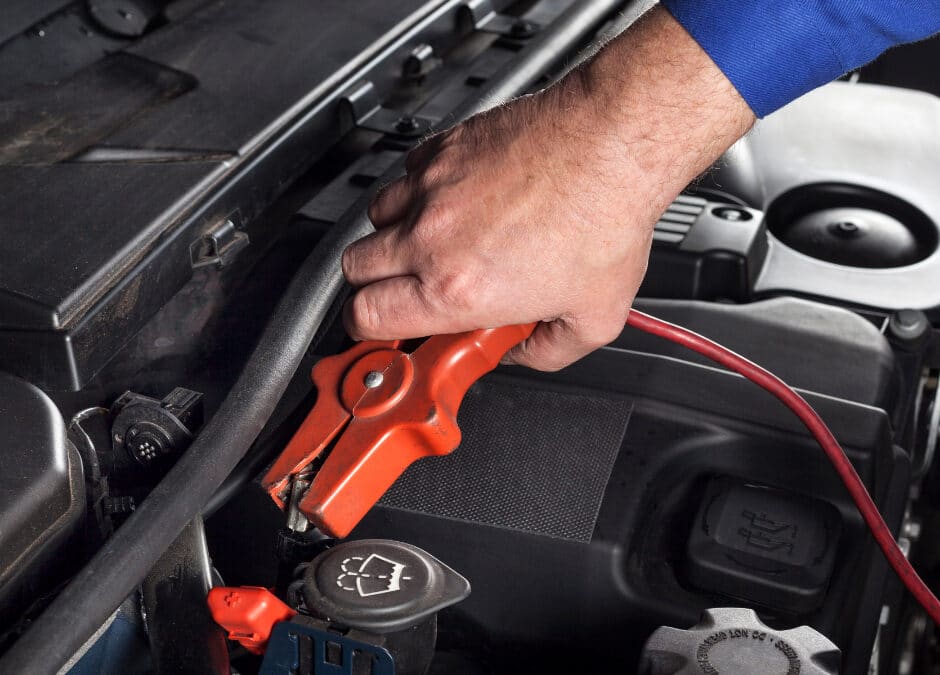Knowing how to jump-start your car correctly is a critical skill for any driver to possess. This comprehensive guide will walk you through the do’s and don’ts of jump-starting, helping you safely get your vehicle running again without needing professional intervention. Following these instructions can avoid common mistakes and ensure a successful jump start. Trust Locust Grove Towing to provide you with the most accurate and reliable information for handling such situations confidently.
When Do You Need to Jump Start Your Car?
It’s important to recognize when your car needs a jump start. Common signs include the vehicle failing to start, dim headlights when the engine is off, and non-functional electronic accessories. These symptoms usually indicate a drained battery. Before attempting a jump start, verify that these signs align with your situation to prevent taking unnecessary risks or causing further damage to your vehicle.
Essential Tools for Jump Starting
To perform a safe and effective jump start, you’ll need a set of reliable jumper cables and a functioning vehicle to provide the jump. Opt for jumper cables that are at least 10 feet long and coated with heavy-duty rubber to ensure safety and durability. Additionally, wearing protective gloves and safety goggles during the process can protect you from potential sparks or battery acid. Keeping these tools in your vehicle ensures that you’re prepared for any battery emergencies on the road.
The Do’s of Jump Starting
Before attempting to jump-start your car, knowing the proper steps to ensure safety and success is essential. Here’s a straightforward list of do’s to follow:
- Park Cars Close But Not Touching: Ensure the vehicles are close enough for cables to reach, but do not let them touch to avoid short circuits.
- Turn Off All Electronics: Switch off both cars’ electronics to prevent electrical spikes.
- Connect Positive to Positive: Attach the red (positive) jumper cable to the positive terminal of both batteries first.
- Ground the Negative Cable: Connect the black (negative) cable to an unpainted metal surface on the car receiving the jump, not to the battery.
- Start the Donor Car First: Turn on the donor car to start charging the dead battery, then try to start the vehicle with the dead battery.
The Don’ts of Jump Starting
Jumpstarting a car incorrectly can be dangerous. To avoid common pitfalls, here’s what you should not do:
- Never Jump a Damaged Battery: Avoid trying to jump-start if the battery is cracked, leaking, or visibly damaged.
- Do Not Connect Negative to Negative: Never attach the negative cable directly to the negative terminal of the dead battery to avoid the risk of sparks or explosions.
- Avoid jump Starting in Bad Weather: Refrain from jump starting under severe weather conditions as this can complicate the process and increase hazards.
- Don’t Rush the Process: Take your time to ensure all connections are secure and correct before starting the cars.
- Don’t Ignore Warning Signs: If the car doesn’t start after a few tries, stop and seek professional help instead of persisting.
Maintaining Your Car Battery
Regular maintenance is crucial to extend your car battery’s life and prevent frequent jump starts. Check your battery’s charge level periodically, especially if your driving habits involve short trips that may not allow the battery to recharge fully. Ensure the battery terminals are clean and tightly connected to avoid power loss. Using a trickle charger can also help maintain the battery’s charge level during extended periods of inactivity. Proper battery care not only enhances performance but also increases the longevity of your battery.
Contact Us for Safe and Reliable Jump Starts
Mastering the art of jump-starting your car safely can save you from many stressful situations on the road. At Locust Grove Towing, we’re committed to empowering drivers with the knowledge and services to handle battery issues confidently. By understanding the correct procedures and what to avoid, you can ensure your safety and the longevity of your car’s battery. Contact us for professional guidance or assistance whenever you’re unsure about a jump start.


Recent Comments